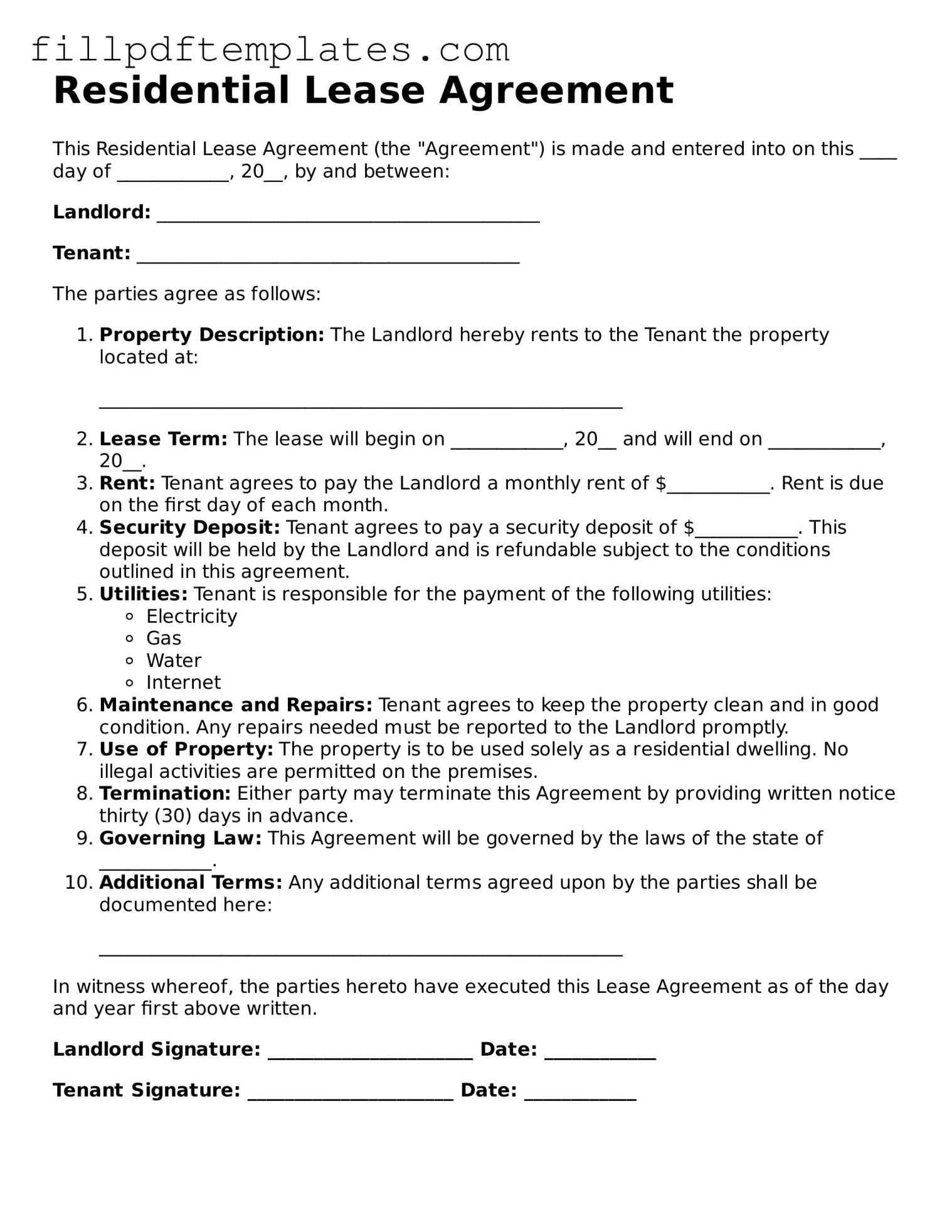Residential Lease Agreement
This Residential Lease Agreement (the "Agreement") is made and entered into on this ____ day of ____________, 20__, by and between:
Landlord: _________________________________________
Tenant: _________________________________________
The parties agree as follows:
- Property Description: The Landlord hereby rents to the Tenant the property located at:
________________________________________________________
- Lease Term: The lease will begin on ____________, 20__ and will end on ____________, 20__.
- Rent: Tenant agrees to pay the Landlord a monthly rent of $___________. Rent is due on the first day of each month.
- Security Deposit: Tenant agrees to pay a security deposit of $___________. This deposit will be held by the Landlord and is refundable subject to the conditions outlined in this agreement.
- Utilities: Tenant is responsible for the payment of the following utilities:
- Electricity
- Gas
- Water
- Internet
- Maintenance and Repairs: Tenant agrees to keep the property clean and in good condition. Any repairs needed must be reported to the Landlord promptly.
- Use of Property: The property is to be used solely as a residential dwelling. No illegal activities are permitted on the premises.
- Termination: Either party may terminate this Agreement by providing written notice thirty (30) days in advance.
- Governing Law: This Agreement will be governed by the laws of the state of ____________.
- Additional Terms: Any additional terms agreed upon by the parties shall be documented here:
________________________________________________________
In witness whereof, the parties hereto have executed this Lease Agreement as of the day and year first above written.
Landlord Signature: ______________________ Date: ____________
Tenant Signature: ______________________ Date: ____________
